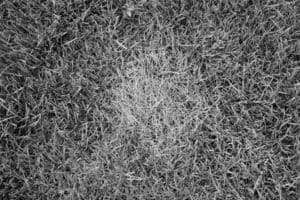To prevent lawn damage in winter, mark the perimeter of your lawn with light-reflecting poles to avoid shoveling or snowblower damage. Rake up debris on warmer days, use salt alternatives to avoid killing grass, and prevent snow mold by maintaining the correct lawn height and removing debris before winter. Additionally, consult a lawn care professional for appropriate treatments based on your grass type and climate.
- Mark the perimeter of your lawn with light-reflecting poles. This will prevent damage caused by shoveling or using a snowblower on the lawn. Sadly, when the snow melts, it’s fairly common to see large chunks of lawn ripped up.
- Rake up debris. On warmer, snow-free days, rake up leaves or other debris that accumulated after winter began.
- Consider using salt alternatives to melt ice. Salt does a good job melting ice but it leads to crumbling and cracking in concrete and metal. It also kills grass and other vegetation. Take care when applying salt to sidewalks and driveways. Try to avoid getting salt close to your lawn. Salt is also harmful to pets, as it settles into pet paws, leading to drying and cracking. While they won’t melt ice, kitty litter and coffee grinds are helpful in improving traction on ice. Check your local home improvement store for organic salt alternatives. Note that some salt alternatives may still be harmful to vegetation so it’s best to avoid applying it near the edges of your lawn.
- Prevent the growth of snow mold.
Come spring when you’re eager for a plush, green lawn, you may be disappointed to discover large patches of brown or gray fungus spread across your lawn. If that happens, rake out dead grass and speak with a professional at your local lawn care center about treatments best for your grass type and climate. Snow mold growth is common in yards with tall grass, leaves and other debris left in piles and improper or excessive amounts of fertilizer. Be sure to cut your lawn to an appropriate length and rake up leaves before winter arrives. Always do your homework to determine what type of fertilizer is best for your grass type and climate. It varies greatly.

Stay safe out there.
Related info
Snowblower Repair Help
Snowblower replacement parts and maintenance products
How to prevent a snowblower accident
Snowblower safety tips
Six things to get ready before the storm hits